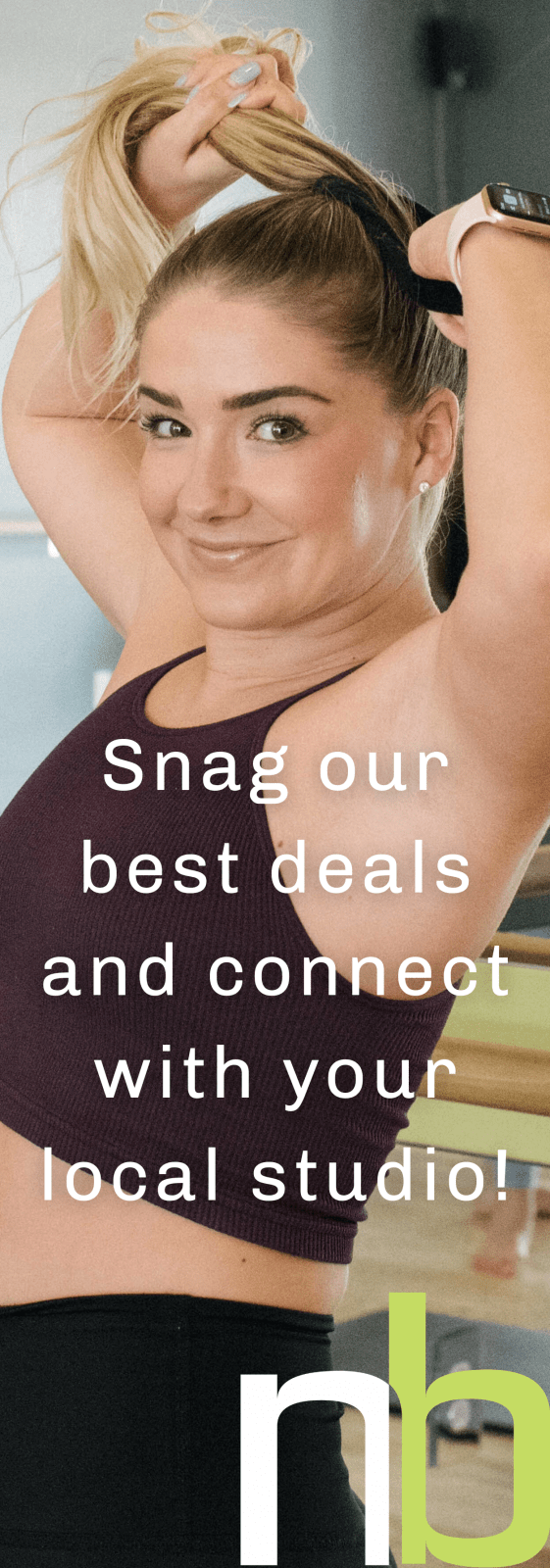How to Tune In To Tone Up
Are you paying attention in class – like teacher’s pet worthy attention? Pop quiz: if your instructor said “repeat that back to me” at any given moment during the workout – could you?
The average human being has an attention span of just eight seconds. That means you can get distracted up to 85 times during the warm-up alone! Fear not friends, we’re here to help with our 4 best tips to quiet your monkey mind, and connect completely to your body during your workout.
1.) Leave your cell phone in your bag. This one is basically a no-brainer, but when you are texting during an ab move, or opting out of a stretch to check your DMs, you’re obviously not fully present. So why create the opportunity for a distraction? Leave your phone in your purse or gym bag. Period. The other problem? Some of us wear our cell phone. So that also means you need to silence notifications on your apple watch. Honestly you don’t even need your apple watch when working out. Does your estimated calorie burn really define the success of your workout? Can you imagine how much prouder you may feel when you’re not holding yourself to a caloric number after class? Bonus: when you’re not constantly looking down at your phone, a world of social connection also opens up before and after class. Chat up your neighbor! Truly take the time for self-care, the duration of your entire studio experience.

2) Fuel your body for focus. Even mild dehydration—the kind you might not even notice—can make it hard to pay attention, according to a study in the Journal of the American College of Nutrition. Start by staying hydrated throughout the day. Try to drink a cup of water before you have your coffee. It’s an easy way to gulp down an extra cup, if there’s a caffeinated reward immediately after. And aim for 8 glasses throughout the day. (There’s even apps to track your water intake!) If you feel like your muscles are fatiguing quicker than normal during your workout, this is likely the reason. Give your body the energy stores it needs to push past your plateaus and excel with every class. Your body influences your mind, and proper nutrition and hydration can improve your performance in class.

3) Take a break. Some of the most productive and focused people in the world swear by the Pomodoro Technique. This easy hack encourages you to break down your work into short, timed intervals. At the end of each interval, you take a quick break. Good news!!! Your Neighborhood Barre class is already timed in this manner! After your warm-up, you have a solid 30-45 seconds to focus on breath coupled with light stretching. The same break follows after your thigh series, and after seat work. Then of course we have a cool down post-class for a longer recovery. The key is to treat each section of class as a pomodoro. That means all of your energy and focus is completely in the exercise you’re doing right now. You’re not questioning if we’re going to do pretzel today, or what you’re going to have for dinner tonight, you’re completely in the zone. When you feel the work migrating away from the target spot, say in the standing leg or in your neck or shoulders, take a break. Stop – take a couple deep breaths, or grab water, then join back in. Just like the quality of your work suffers when you’re burned out, so do your workout results when you overdo it.
4) Just breathe. When you feel your mind drifting off somewhere else, ask yourself “Am I here?” Bring your attention and awareness back to your surroundings. Start by narrowing your attention to a single area of focus in your body—your abdomen, chest, hands, or feet. Notice the sensation of what that body part is doing right then. Now begin to listen to the sounds around you. Start with sounds nearby, namely the music, but then listen with an expansive ear. Are you listening to each word the instructor is saying, or are you tuned out and mirroring the motions? If you’re finding an exercise overwhelming, take attention back to your breath. Breathe in deeply for 3-4 counts, focusing on the expansion of your ribs. Then exhale completely for 5 – 7 counts, emptying your lungs. Many people “over breathe” which means you’re inhaling more than you’re exhaling. In times of stress you begin to feel out of breath and breathe in more than usual. Focus on your exhalations to create an elevation in your blood stream and balance your oxygen exchange. Intentional breathing is credited with increasing mindfulness, which has been proven to reduce your stress response.


